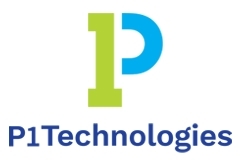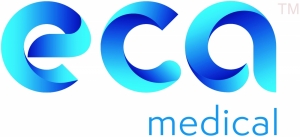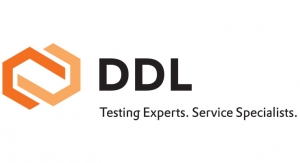Jacqueline Trovato, Healthcare/Legal Writer02.09.21
The orthopedic and medical devices manufacturing industry is projected to grow dramatically in the coming years due to the expanding elderly population and the need for medical and orthopedic devices that will improve their quality of life. With this growth will come demands for the industry, as well as benefits. In this article, we'll look at today’s industry trends.
Key Takeaways
Continued Growth in the Medical and Orthopedic Device Industry
Orthopedic and medical devices play a primary role in improving the health of patients with musculoskeletal and other medical conditions. The U.S. currently boasts the largest medical device market in the world. By 2023, the industry is expected to grow to a whopping $208 billion. Additionally, the worldwide orthopedic devices market is projected to reach approximately $43.1 billion by the year 2024.
The need for orthopedic and medical alert devices is increasing rapidly due to the aging baby boomer population and the increase in number of overweight and obese individuals. Both the rising incidence of orthopedic conditions, such as degenerative bone disease, and the increasing geriatric population are driving growth in the orthopedic device market.
The rise in obesity and sedentary lifestyles is also expected to boost the medical device industry's growth. As a result, joint replacement surgeries, such as knee and hip replacements, have increased steadily and continue to grow among those 65 and older.
An increased awareness about the availability of innovative medical and orthopedic devices is prompting hospitals to upgrade their devices. Reimbursement for coverage costs for treatments has also fueled the adoption of orthopedic and other surgeries. These factors allow for hospitals and doctors to seek more advanced, higher-priced devices that will add to the total revenue generated by manufacturers.
Outside the U.S., it's anticipated China and India will account for the world's largest geriatric populations. The Asia/Pacific area is an emerging market due to its increasing per-capita income, increasing disease awareness, and improved health infrastructure. This makes it a high growth potential for both medical and orthopedic device manufacturers. The booming medical tourism industry, with more cost-efficient rates, should also attract patients.
In the United Kingdom, according to a published report by Arthritis Research, an estimated 17.8 million people in the U.K. live with a musculoskeletal condition. This number accounts for roughly 28.9 percent of the total population. These statistics reveal the number of orthopedic surgeries is steadily increasing, which should lead to an increase in the demand for orthopedic implants.
Out of all the medical devices on the market, in vitro diagnostics (IVD) devices used to detect diseases and medical conditions accounted for 12.9 percent of the market share in 2018. These devices can detect diseases such as diabetes, HIV/AIDS, malaria, and cancer. Amid the current COVID-19 pandemic, IVDs are now taking center stage, with widespread use of diagnostic tests, serology/antibody tests, and tests for the management of COVID-19 patients.
These factors, coupled with increasing patient life expectancy and growing aging populations throughout the world, should promote continued growth in the medical and orthopedic device industry. The result of such growth will create financial rewards for the most innovative and forward-thinking device manufacturers.
Meeting the Demands of Both Healthcare Professionals and Consumers
To meet the demands of both consumers and healthcare professionals, manufacturers of medical and orthopedic devices are focusing on advancements that integrate digital technologies. Increasing awareness regarding the interactive role patients play is now a factor the industry must weigh when investing in research and development for innovative medical and orthopedic devices. The doctor-knows-what-is-best mindset is no longer the standard. Patients no longer sit back and accept what their physician recommends without question. They demand detailed information and positive results from the medical devices prescribed.
The medical and orthopedic device industry that used to only sell and market to physicians and hospitals has now found they must also appeal to patients. With today’s fast-paced, innovative consumer electronics industry, patients are now more adept at using technology, which means medical device makers must appeal to this new market.
This means they must also consider user experience when developing products. This consideration, along with hospitals and orthopedic clinics looking for new ways to implement innovative products for their patients, is new territory for the industry. In the end, the companies that can quickly and effectively combine critical elements of both the medical and consumer sectors will be the ones to thrive.
Continued Investment in Skilled Workers and Innovative Technologies
The medical and orthopedics device industry provides almost two million jobs in the U.S. However, more than 80 percent of medical device manufacturers in the United States employ less than 50 people. This is because they are usually start-ups without much sales revenue.
Research and development spending accounts for the highest percentage of expenditure for companies in the sector—typically around 7 percent of all revenue. Compared to other industries, the medical and orthopedic device sector invests more of its annual revenues in innovation and enhancement of existing technologies.
According to Zacks Equity Research, there are five critical factors for success in the medical and orthopedic device industry:
The Ongoing Drive for Collaboration, Mergers, and Acquisitions
Medical and orthopedic device manufacturers must collaborate with various industries, including software development, instrumentation, microelectronics, telecommunications, and biotechnology.
The medical and orthopedic device sector's ongoing collaboration, and a quest for improved diagnoses and treatments, have led to amazing innovations. Some of these innovations include neurostimulators, biomarkers, robotic assistance, stent technologies, and implantable electronic devices—all of which are significantly improving the patient’s quality of life.
It’s expected there will be a rise in research and development investments when it comes to collaborations for enhanced product portfolios. Merger and acquisition (M&A) activity in the industry increased significantly in 2015 and 2017.
Other key industry developments in the area of M&A in 2019 included:
We expect to see more mergers and acquisitions in the medical and orthopedic device industry in the future, yet the COVID-19 pandemic seems to have stalled things by making it more difficult for companies to get through the legal and financial implications of closing M&A deals.
The Effect of Ever-Increasing Regulatory Requirements
Increasing government mandates have resulted in more stringent regulatory requirements. Strict regulatory guidelines for the approval of Class III medical devices have unfortunately slowed down the approval of medical and orthopedic devices.
This has required manufacturers to be more cautious when making decisions about investing in innovative technology. More stringent and ever-increasing regulations are dictating medical device developments. These innovative devices take much more time to develop than consumer electronic products.
Due to today's compounding regulations, medical and orthopedic device manufacturers are more focused on reducing costs that don't necessarily enhance the value of their products. They are instead focusing on increasing their investments in compliant designs that strengthen consumer access to their devices. They are even mitigating regulatory expenses as well as supply chain expenditures.
Another consideration has been to supplement the manufacturer's portfolios with consumer-facing, non-regulated medical devices. By doing this, many are bringing their products to market faster, calling them wellness and disease management devices vs. medical devices. By positioning an offering as a wellness device, manufacturers can benefit from new lines of revenue in the rapidly growing healthcare market.
Commoditization and Marketing Are Gaining Importance
As a result of compounding regulatory requirements, some of the top manufacturers in the orthopedic devices market are moving to commoditization. They are taking this route with their devices, delivery systems, and instruments. Both medical and orthopedic device manufacturers are focusing on making their products more readily available to consumers, hospitals, and healthcare professionals.
The increasing demand for orthopedic procedures from the elderly population makes it essential to use advanced technology that makes devices simple and easy to use. The struggle is to develop devices that are available at affordable prices. This is a constant challenge, especially for orthopedic device manufacturers. As a result, manufacturers are focusing on developing the most effective instruments at affordable prices. They are using innovative materials like optimized plastics, metals, and synthetics, as well as natural regenerative items to design devices and tools suitable for different genders and age groups.
The drawback with commoditization is that it results in fewer differentiators and increased price wars in the industry. For this reason, it's crucial to position a product in such a way that consumers perceive it as unique and better than others. This will drive value and improve profit margins for those who strategically plan their marketing messages to the right target audience. To do this requires an understanding of the purchasers' behaviors and needs, and the ability to match the product message to what purchasers value. Those who succeed will do this in a way that their competitors cannot.
The Increased Use of 3D Printing
Orthopedic and medical device manufacturers are taking advantage of 3D printing. The Food and Drug Administration (FDA) has now approved the use of 3D printing for implantable orthopedic devices. This means companies can now develop personalized prosthetic devices and metallic implants using materials like cobalt-chromium alloy, alpha-beta titanium alloy (Ti-6Al-4V), and stainless-steel using 3D printing.
In conjunction with 3D printing, medical and orthopedic device manufacturers are now considering the growing use of minimally invasive surgeries when designing their devices. They realize the high demand for procedures such as computer-aided surgeries, robotics, and 3D printing, which focus on devices with enhanced precision that cause less of an impact on the patient.
What Innovative Industry Leaders Are Looking to in 2021
Telemedicine: The COVID-19 pandemic has made it apparent to all—not just medical and orthopedic device leaders—how vital telemedicine has become. With social distancing, telemedicine and remote monitoring have become primary modes of patient care.
Remote patient monitoring has been used for years, but it is becoming increasingly more useful for those who don’t want to, or can’t, go to a physician’s office for a health check-up. Factors like blood sugar, oxygen saturation, blood pressure, weight, and more, can all be monitored remotely. Industry leaders in the medical device field will be looking for more innovative technologies to make use of telemedicine.
Artificial Intelligence (A.I.): Machine learning is growing exponentially, and the FDA believes A.I. will have an increasing role in providing more personalized healthcare. They have even established a framework of guidance to encourage innovation in this field when developing medical devices.
Robotics: Robotics are being used today and will continue to evolve to help physicians and surgeons during various medical procedures. They also help patients with post-surgical rehabilitation. Robots are evolving into the field of nanotechnology (microbots), where they are small enough to enter human capillaries. These microbots will be used to repair damaged tissues or even attack cancer cells.
Wearable Health Devices: Wearable health devices have gained interest in recent years. Biosensors that provide real-time physiological information to health providers can measure things like sweat, saliva, tears, and even interstitial fluid. These readings can help provide a timely diagnosis to control diseases.
Augmented Reality (A.R.)/Virtual Reality (V.R.)/Mixed Reality (M.R.): These modern technologies are not just for games and entertainment anymore:
Smart Orthopedic Implants: In the near future, we'll have smart orthopedic implants that will tell physicians if a staph infection is brewing due to a recent orthopedic implantation. It will even provide details on the exact location and type of bacteria causing the issue. Orthopedic implants will contain sensors to help surgeons detect problems early. These sensors will measure things like pH and bacteria levels, and even detect the presence of particulates that may cause issues.
Looking to the Future and Beyond
The possibilities are endless when it comes to future industry trends in medical and orthopedic devices. The key to success will be weighing the costs versus the value for many device manufacturers, but those companies with a vested interest in the long-term will likely come out as the ultimate winners in the field.
Resources
https://www.mordorintelligence.com/industry-reports/global-orthopedic-devices-market-industry
https://www.fda.gov/medical-devices/coronavirus-disease-2019-covid-19-emergency-use-authorizations-medical-devices/vitro-diagnostics-euas
https://www.evaluate.com/vantage/articles/data-insights/ma/medical-device-mergers-pause
https://www.selectusa.gov/medical-technology-industry-united-states
https://www.fda.gov/files/about%20fda/published/Future-Trends-in-Medical-Device-Technologies--A-Ten-Year-Forecast-%28pdf%29.pdf
https://www.mpo-mag.com/issues/2018-05-03/view_columns/medtech-ma-off-to-a-strong-start-in-2018
https://www.grandviewresearch.com/industry-analysis/orthopedic-devices-market
https://investmentbank.com/medical-device-industry/
https://www.launchteaminc.com/blog/medical-device-launch-creating-competitive-advantage-with-product-positioning
https://www.fda.gov/medical-devices/device-advice-comprehensive-regulatory-assistance/guidance-documents-medical-devices-and-radiation-emitting-products
https://penrod.co/5-medical-device-marketing-trends-to-keep-an-eye-on-in-2021/
Jacqueline Trovato is a healthcare and legal writer with nearly 40 years of experience. She graduated with a BS in education and psychology from James Madison University.
Key Takeaways
- The stage is set for continued growth in the medical and orthopedic device industry.
- The medical and orthopedic device industry must now meet the demands of both healthcare professionals and consumers.
- There’s a need for continued investment in skilled workers and innovative technologies.
- There's an ongoing drive for collaboration, mergers, and acquisitions in the industry.
- Ever-increasing regulatory requirements have changed the way medical and orthopedic device manufacturers operate.
- Commoditization and marketing are gaining importance in the medical and orthopedic device industry.
- There’s an increasing use of 3D printing for manufacturing in the orthopedic and medical device industry.
Continued Growth in the Medical and Orthopedic Device Industry
Orthopedic and medical devices play a primary role in improving the health of patients with musculoskeletal and other medical conditions. The U.S. currently boasts the largest medical device market in the world. By 2023, the industry is expected to grow to a whopping $208 billion. Additionally, the worldwide orthopedic devices market is projected to reach approximately $43.1 billion by the year 2024.
The need for orthopedic and medical alert devices is increasing rapidly due to the aging baby boomer population and the increase in number of overweight and obese individuals. Both the rising incidence of orthopedic conditions, such as degenerative bone disease, and the increasing geriatric population are driving growth in the orthopedic device market.
The rise in obesity and sedentary lifestyles is also expected to boost the medical device industry's growth. As a result, joint replacement surgeries, such as knee and hip replacements, have increased steadily and continue to grow among those 65 and older.
An increased awareness about the availability of innovative medical and orthopedic devices is prompting hospitals to upgrade their devices. Reimbursement for coverage costs for treatments has also fueled the adoption of orthopedic and other surgeries. These factors allow for hospitals and doctors to seek more advanced, higher-priced devices that will add to the total revenue generated by manufacturers.
Outside the U.S., it's anticipated China and India will account for the world's largest geriatric populations. The Asia/Pacific area is an emerging market due to its increasing per-capita income, increasing disease awareness, and improved health infrastructure. This makes it a high growth potential for both medical and orthopedic device manufacturers. The booming medical tourism industry, with more cost-efficient rates, should also attract patients.
In the United Kingdom, according to a published report by Arthritis Research, an estimated 17.8 million people in the U.K. live with a musculoskeletal condition. This number accounts for roughly 28.9 percent of the total population. These statistics reveal the number of orthopedic surgeries is steadily increasing, which should lead to an increase in the demand for orthopedic implants.
Out of all the medical devices on the market, in vitro diagnostics (IVD) devices used to detect diseases and medical conditions accounted for 12.9 percent of the market share in 2018. These devices can detect diseases such as diabetes, HIV/AIDS, malaria, and cancer. Amid the current COVID-19 pandemic, IVDs are now taking center stage, with widespread use of diagnostic tests, serology/antibody tests, and tests for the management of COVID-19 patients.
These factors, coupled with increasing patient life expectancy and growing aging populations throughout the world, should promote continued growth in the medical and orthopedic device industry. The result of such growth will create financial rewards for the most innovative and forward-thinking device manufacturers.
Meeting the Demands of Both Healthcare Professionals and Consumers
To meet the demands of both consumers and healthcare professionals, manufacturers of medical and orthopedic devices are focusing on advancements that integrate digital technologies. Increasing awareness regarding the interactive role patients play is now a factor the industry must weigh when investing in research and development for innovative medical and orthopedic devices. The doctor-knows-what-is-best mindset is no longer the standard. Patients no longer sit back and accept what their physician recommends without question. They demand detailed information and positive results from the medical devices prescribed.
The medical and orthopedic device industry that used to only sell and market to physicians and hospitals has now found they must also appeal to patients. With today’s fast-paced, innovative consumer electronics industry, patients are now more adept at using technology, which means medical device makers must appeal to this new market.
This means they must also consider user experience when developing products. This consideration, along with hospitals and orthopedic clinics looking for new ways to implement innovative products for their patients, is new territory for the industry. In the end, the companies that can quickly and effectively combine critical elements of both the medical and consumer sectors will be the ones to thrive.
Continued Investment in Skilled Workers and Innovative Technologies
The medical and orthopedics device industry provides almost two million jobs in the U.S. However, more than 80 percent of medical device manufacturers in the United States employ less than 50 people. This is because they are usually start-ups without much sales revenue.
Research and development spending accounts for the highest percentage of expenditure for companies in the sector—typically around 7 percent of all revenue. Compared to other industries, the medical and orthopedic device sector invests more of its annual revenues in innovation and enhancement of existing technologies.
According to Zacks Equity Research, there are five critical factors for success in the medical and orthopedic device industry:
- They need highly skilled workers due to the technical nature of medical devices' design and production.
- They require access to the latest technology. This is essential to effectively compete with rivals in the industry.
- They must diversify their domestic and international markets. This is required to increase usage capacity.
- They must employ economies of scale and strive to decrease variable costs to improve profit margins.
- They need access to both distributors and end-users for effective product flow and sales.
The Ongoing Drive for Collaboration, Mergers, and Acquisitions
Medical and orthopedic device manufacturers must collaborate with various industries, including software development, instrumentation, microelectronics, telecommunications, and biotechnology.
The medical and orthopedic device sector's ongoing collaboration, and a quest for improved diagnoses and treatments, have led to amazing innovations. Some of these innovations include neurostimulators, biomarkers, robotic assistance, stent technologies, and implantable electronic devices—all of which are significantly improving the patient’s quality of life.
It’s expected there will be a rise in research and development investments when it comes to collaborations for enhanced product portfolios. Merger and acquisition (M&A) activity in the industry increased significantly in 2015 and 2017.
Other key industry developments in the area of M&A in 2019 included:
- The 2019 Medtronic acquisition of Epix Therapeutics and its Epix Therapeutics' DiamondTemp catheter-based radiofrequency cardiac ablation system.
- Medtronic's 2019 acquisition of Titan Spine to expand its portfolio in the spinal medical devices industry.
- Boston Scientific Corporation’s 2019 acquisition of spinal implant maker Vertiflex, which provides lumbar spinal stenosis patients with long-term relief from back and leg pain via a minimally invasive procedure. This acquisition strengthened Boston Scientific’s position in the medical device market.
We expect to see more mergers and acquisitions in the medical and orthopedic device industry in the future, yet the COVID-19 pandemic seems to have stalled things by making it more difficult for companies to get through the legal and financial implications of closing M&A deals.
The Effect of Ever-Increasing Regulatory Requirements
Increasing government mandates have resulted in more stringent regulatory requirements. Strict regulatory guidelines for the approval of Class III medical devices have unfortunately slowed down the approval of medical and orthopedic devices.
This has required manufacturers to be more cautious when making decisions about investing in innovative technology. More stringent and ever-increasing regulations are dictating medical device developments. These innovative devices take much more time to develop than consumer electronic products.
Due to today's compounding regulations, medical and orthopedic device manufacturers are more focused on reducing costs that don't necessarily enhance the value of their products. They are instead focusing on increasing their investments in compliant designs that strengthen consumer access to their devices. They are even mitigating regulatory expenses as well as supply chain expenditures.
Another consideration has been to supplement the manufacturer's portfolios with consumer-facing, non-regulated medical devices. By doing this, many are bringing their products to market faster, calling them wellness and disease management devices vs. medical devices. By positioning an offering as a wellness device, manufacturers can benefit from new lines of revenue in the rapidly growing healthcare market.
Commoditization and Marketing Are Gaining Importance
As a result of compounding regulatory requirements, some of the top manufacturers in the orthopedic devices market are moving to commoditization. They are taking this route with their devices, delivery systems, and instruments. Both medical and orthopedic device manufacturers are focusing on making their products more readily available to consumers, hospitals, and healthcare professionals.
The increasing demand for orthopedic procedures from the elderly population makes it essential to use advanced technology that makes devices simple and easy to use. The struggle is to develop devices that are available at affordable prices. This is a constant challenge, especially for orthopedic device manufacturers. As a result, manufacturers are focusing on developing the most effective instruments at affordable prices. They are using innovative materials like optimized plastics, metals, and synthetics, as well as natural regenerative items to design devices and tools suitable for different genders and age groups.
The drawback with commoditization is that it results in fewer differentiators and increased price wars in the industry. For this reason, it's crucial to position a product in such a way that consumers perceive it as unique and better than others. This will drive value and improve profit margins for those who strategically plan their marketing messages to the right target audience. To do this requires an understanding of the purchasers' behaviors and needs, and the ability to match the product message to what purchasers value. Those who succeed will do this in a way that their competitors cannot.
The Increased Use of 3D Printing
Orthopedic and medical device manufacturers are taking advantage of 3D printing. The Food and Drug Administration (FDA) has now approved the use of 3D printing for implantable orthopedic devices. This means companies can now develop personalized prosthetic devices and metallic implants using materials like cobalt-chromium alloy, alpha-beta titanium alloy (Ti-6Al-4V), and stainless-steel using 3D printing.
In conjunction with 3D printing, medical and orthopedic device manufacturers are now considering the growing use of minimally invasive surgeries when designing their devices. They realize the high demand for procedures such as computer-aided surgeries, robotics, and 3D printing, which focus on devices with enhanced precision that cause less of an impact on the patient.
What Innovative Industry Leaders Are Looking to in 2021
Telemedicine: The COVID-19 pandemic has made it apparent to all—not just medical and orthopedic device leaders—how vital telemedicine has become. With social distancing, telemedicine and remote monitoring have become primary modes of patient care.
Remote patient monitoring has been used for years, but it is becoming increasingly more useful for those who don’t want to, or can’t, go to a physician’s office for a health check-up. Factors like blood sugar, oxygen saturation, blood pressure, weight, and more, can all be monitored remotely. Industry leaders in the medical device field will be looking for more innovative technologies to make use of telemedicine.
Artificial Intelligence (A.I.): Machine learning is growing exponentially, and the FDA believes A.I. will have an increasing role in providing more personalized healthcare. They have even established a framework of guidance to encourage innovation in this field when developing medical devices.
Robotics: Robotics are being used today and will continue to evolve to help physicians and surgeons during various medical procedures. They also help patients with post-surgical rehabilitation. Robots are evolving into the field of nanotechnology (microbots), where they are small enough to enter human capillaries. These microbots will be used to repair damaged tissues or even attack cancer cells.
Wearable Health Devices: Wearable health devices have gained interest in recent years. Biosensors that provide real-time physiological information to health providers can measure things like sweat, saliva, tears, and even interstitial fluid. These readings can help provide a timely diagnosis to control diseases.
Augmented Reality (A.R.)/Virtual Reality (V.R.)/Mixed Reality (M.R.): These modern technologies are not just for games and entertainment anymore:
- V.R. is being used to treat post-traumatic stress disorder (PTSD), anxiety, depression, and even eating disorders.
- A.R. helps surgeons see data in three dimensions to help them better plan for upcoming surgeries. It is also being used in medical research.
- M.R. enables real and virtual elements to interact in the same environment. Doctors can combine imaging information and complex medical data to help them prepare for procedures and provide the most up-to-date care their patients deserve.
Smart Orthopedic Implants: In the near future, we'll have smart orthopedic implants that will tell physicians if a staph infection is brewing due to a recent orthopedic implantation. It will even provide details on the exact location and type of bacteria causing the issue. Orthopedic implants will contain sensors to help surgeons detect problems early. These sensors will measure things like pH and bacteria levels, and even detect the presence of particulates that may cause issues.
Looking to the Future and Beyond
The possibilities are endless when it comes to future industry trends in medical and orthopedic devices. The key to success will be weighing the costs versus the value for many device manufacturers, but those companies with a vested interest in the long-term will likely come out as the ultimate winners in the field.
Resources
https://www.mordorintelligence.com/industry-reports/global-orthopedic-devices-market-industry
https://www.fda.gov/medical-devices/coronavirus-disease-2019-covid-19-emergency-use-authorizations-medical-devices/vitro-diagnostics-euas
https://www.evaluate.com/vantage/articles/data-insights/ma/medical-device-mergers-pause
https://www.selectusa.gov/medical-technology-industry-united-states
https://www.fda.gov/files/about%20fda/published/Future-Trends-in-Medical-Device-Technologies--A-Ten-Year-Forecast-%28pdf%29.pdf
https://www.mpo-mag.com/issues/2018-05-03/view_columns/medtech-ma-off-to-a-strong-start-in-2018
https://www.grandviewresearch.com/industry-analysis/orthopedic-devices-market
https://investmentbank.com/medical-device-industry/
https://www.launchteaminc.com/blog/medical-device-launch-creating-competitive-advantage-with-product-positioning
https://www.fda.gov/medical-devices/device-advice-comprehensive-regulatory-assistance/guidance-documents-medical-devices-and-radiation-emitting-products
https://penrod.co/5-medical-device-marketing-trends-to-keep-an-eye-on-in-2021/
Jacqueline Trovato is a healthcare and legal writer with nearly 40 years of experience. She graduated with a BS in education and psychology from James Madison University.




















